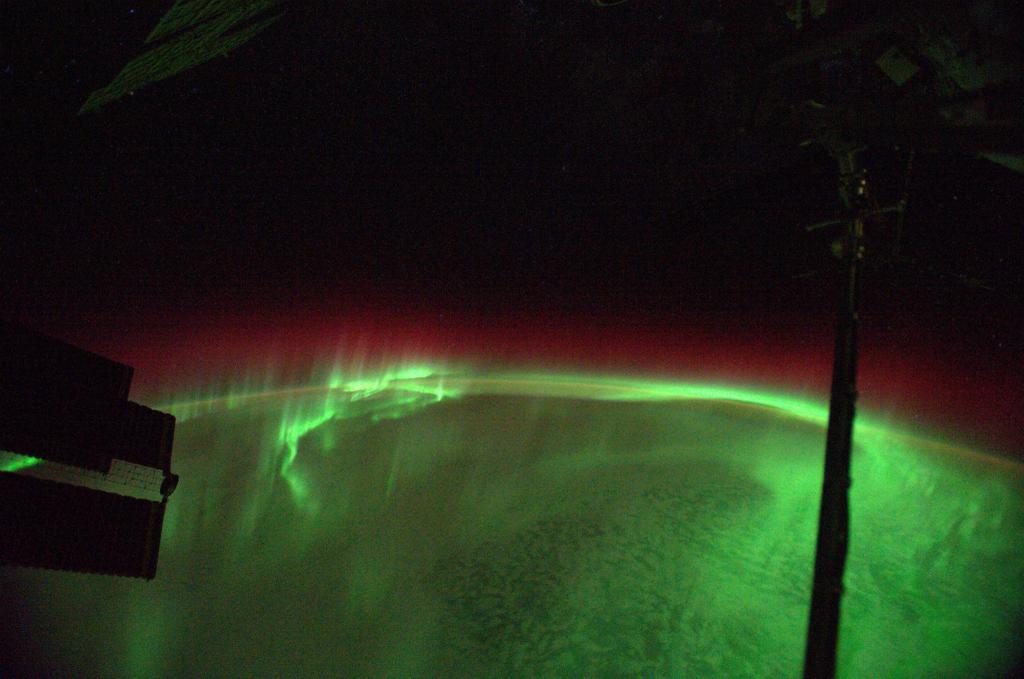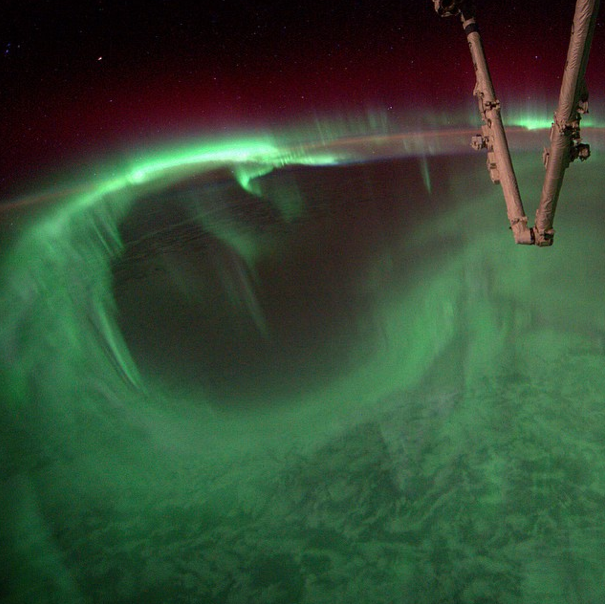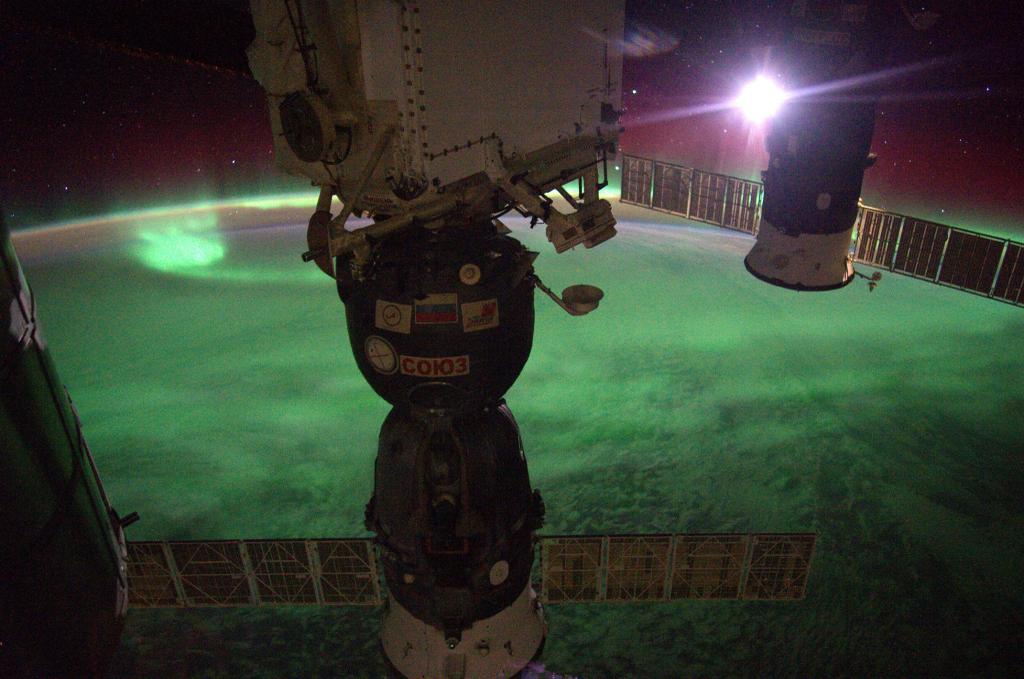Breathtaking Auroras Wow Astronauts in Space (Photos)

The northern lights are a stunning sight for people on Earth, but even astronauts can see the incredible light shows from outer space.
Last week, NASA astronauts Reid Wiseman, Steve Swanson and European Space Agency astronaut Alexander Gerst all captured some amazing photos and a video of the auroras from space on the International Space Station. The astronauts even got the chance to fly into the glowing green lights of the aurora while on the station.
"Words can't describe how it feels flying through an #aurora," ESA's Gerst wrote in a post on Twitter on Aug. 29. "I wouldn't even know where to begin." [See more amazing photos of auroras taken in 2014]
Gerst and Wiseman shared several incredible photos of the northern lights glowing green and red on Twitter. One of Wiseman's photos shows an enormous green loop of light stretching out below the space station.
"We can't stop looking outside," Wiseman wrote on Twitter.
The northern lights can stretch as high as 250 miles (400 kilometers) above Earth's surface, a bit higher than the average height of the International Space Station's orbit.
"Swimming in an ocean of glow," Gerst wrote in another Twitter image description. "In some moments it feels like Earth is actually alive."
Breaking space news, the latest updates on rocket launches, skywatching events and more!
Swanson shared his image of the dancing green lights on Instagram. His image also shows a loop of green and the space station's robotic arm in the foreground. A red hue shines above the green lights with Earth framed by stars in his image.
Auroras on Earth are created when charged particles from the sun interact with the planet's atmosphere. Solar wind blows the particles toward Earth and the planet's magnetic field captures them, pulling the ions and electrons toward the poles. When the charged particles interact with neutral particles in the atmosphere, it causes the distinct glow of the auroras.
Another photo from Gerst posted Wednesday (Sept. 3) shows the Russian Soyuz spacecraft used to ferry astronauts to and from space above a sea of green light. The moon shines to the left of one of the Soyuz capsules.
"The #Moon, about to dive into a glowing ocean of green," Gerst wrote as a caption to the image on Twitter.
Editor's Note: If you capture an amazing photo of auroras on Earth or any other night sky view and want to share it for a possible photo story or gallery, send images and comments in to managing editor Tariq Malik at: tmalik@space.com.
Follow Miriam Kramer @mirikramer and Google+. Follow us @Spacedotcom, Facebook and Google+. Original article on Space.com.

Miriam Kramer joined Space.com as a Staff Writer in December 2012. Since then, she has floated in weightlessness on a zero-gravity flight, felt the pull of 4-Gs in a trainer aircraft and watched rockets soar into space from Florida and Virginia. She also served as Space.com's lead space entertainment reporter, and enjoys all aspects of space news, astronomy and commercial spaceflight. Miriam has also presented space stories during live interviews with Fox News and other TV and radio outlets. She originally hails from Knoxville, Tennessee where she and her family would take trips to dark spots on the outskirts of town to watch meteor showers every year. She loves to travel and one day hopes to see the northern lights in person. Miriam is currently a space reporter with Axios, writing the Axios Space newsletter. You can follow Miriam on Twitter.




